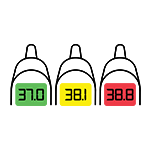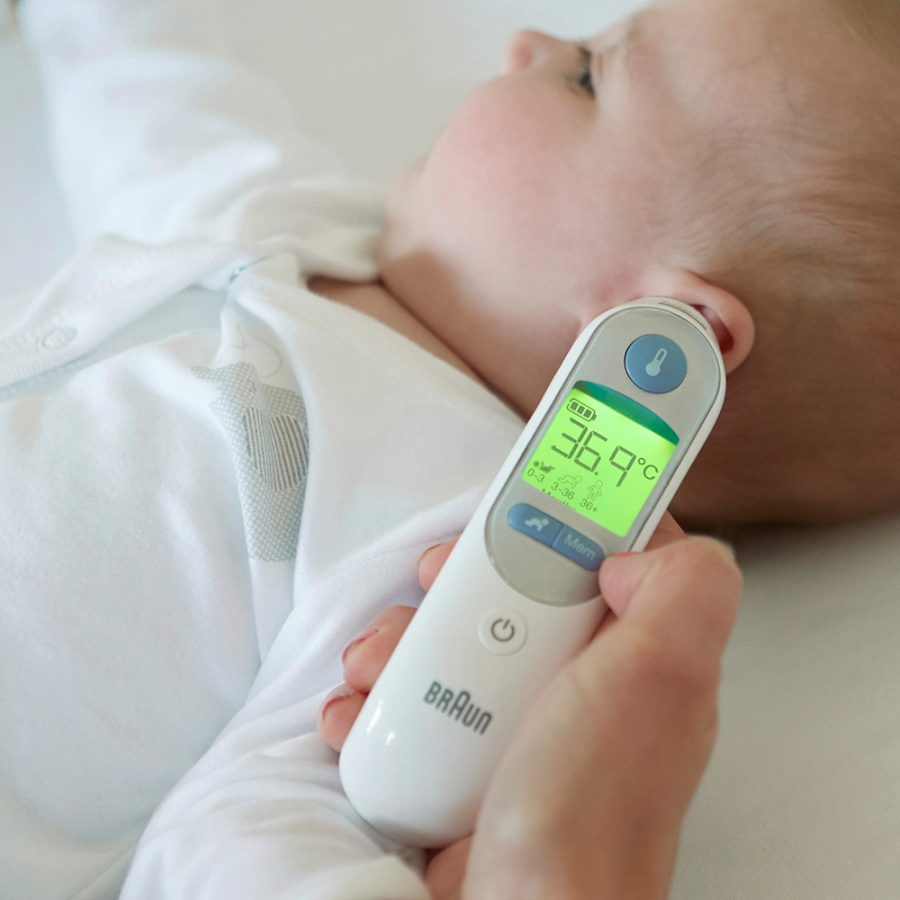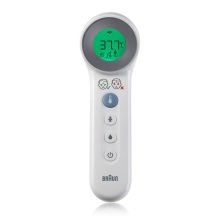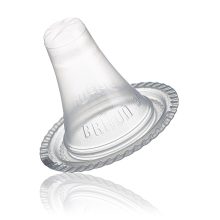AgeSmartTM takes away the guesswork
Clinical research shows that the definition of fever changes as newborns grow into little kids and little kids grow into adults*. What is a fever in a newborn can be a normal temperature in a four-year-old.
Doctors know this, but many parents do not. To help you interpret your child’s temperature more confidently, based on the age of your child, Braun has developed unique AgeSmartTM technology.
In short, AgeSmartTM helps you to interpret your child’s temperature taking into account their exact age. With the new AgeSmartTM, you get the accuracy and peace of mind you need.
Taking temperature with AgeSmart™ is easy
With new AgeSmartTM technology, you can take and interpret the temperature of a child or any family member in three simple steps:

Step 1
Set your child’s age with the AgeSmart™ button.

Step 2
Take the temperature.

Step 3
The colour coded fever indicator will help you understand and interpret the results and act accordingly – green (normal temperature), yellow (moderate temperature) and red (high temperature).
The AgeSmartTM fever guidance is designed to warn you of any temperature readings that you should worry about, based on the most conservative criteria.

What to do when the fever indicator shows green, yellow or red?
If there are symptoms, such as unusual irritability, unresponsiveness, weakness, vomiting, diarrhea, dry skin, unusual thirst, seizure, loss of appetite, or changes in activity, you should contact a doctor regardless of whether the thermometer shows green, yellow, or red.
If temperature readings are in the red range, you should speak with a doctor whether or not there are symptoms. Someone who has an elevated temperature in the yellow range and also feels sick (or appears to be sick), should speak with a doctor to find out whether or not to come into the medical office. You may choose not to consult a physician only if the indicator is green and there are no symptoms. When in doubt about the symptoms, always consult your physician.
High fever in children should be a concern. High fever usually is a sign of infection, which can be either viral or bacterial. In young children, there is a chance that the infection can be meningitis or sepsis, both of which can be very serious. Very young babies may not have high fevers even when they have infections, so even a temperature that is only slightly higher than normal may be a sign of infection in an infant. In infants, even a small rise in temperature must be taken seriously. To be on the safe side, if temperature readings are elevated or high, especially if your child has symptoms along with fever, you should consult a doctor immediately. The doctor will ask about symptoms, because without symptoms even a high temperature may not be cause for alarm.
Braun thermometers featuring AgeSmart™ technology:





